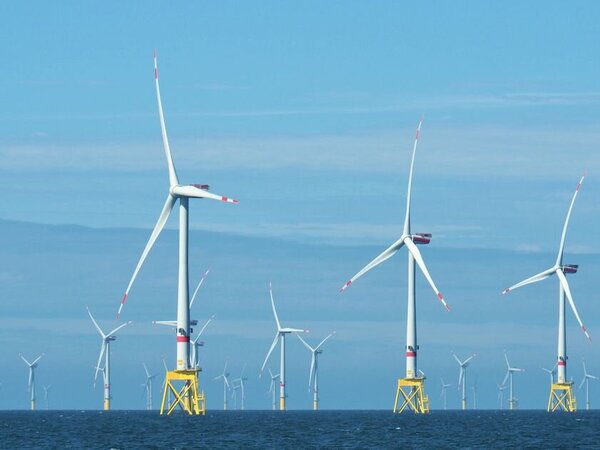Expansion of offshore energy production will lead to considerable spatial conflicts in European seas
The massive expansion of renewable offshore energies will require large areas in all European seas. Integrated maritime spatial planning and use can mitigate emerging conflicts with traditional marine users such as fisheries. A recent study led by Dr. Vanessa Stelzenmüller from the Thünen Institute of Sea Fisheries in Bremerhaven quantifies future spatial losses and presents synergy opportunities.
Heading for a CO2-neutral energy supply, offshore plants such as wind turbines or wave and tidal power plants play a central role. The planning, construction and commissioning of new plants to meet the growing demand for energy from renewable sources affects large areas of the sea in the exclusive economic zones of European states, i.e. the sea areas within the 200-mile zone where a state holds exclusive rights of use. Not only in the North Sea and the Baltic Sea will it therefore become tight in the near future, but in all European seas. The intensifying spatial conflicts have far-reaching effects on fishing and the availability of fishing grounds.
In a recent study, a group of researchers led by Dr. Vanessa Stelzenmüller from the Thünen Institute of Sea Fisheries in Bremerhaven has now for the first time determined the overlaps of existing and planned offshore energy sites with fishing grounds and thus developed a basis for assessing spatial conflicts and their possible economic consequences.
Large areas are already developed with offshore installations, especially in the North Sea and Baltic Sea. The United Kingdom has dedicated the largest share of its exclusive economic zone to energy production from renewables, at around 1480 km2, followed by Germany and Denmark. In doing so, the three countries focus primarily on the use of wind power. In the long term, the further expansion of this sector should involve a total of about 60,000 km2 in the North Sea (about 10 % of the total area) and 20,000 km2 in the Baltic Sea. Compared to the area currently used for wind power of about 5,000 km2 in the North Sea and hardly any significant areas in the Baltic Sea, this represents a considerable increase in spatial demand. In the other European seas, the Celtic Sea, the Atlantic region and the Mediterranean Sea, the plans also envisage significant increases in spatial use for energy generation, especially after 2025.
Since fishing is not allowed in most of those areas, or is only allowed to a very limited extent, the loss of fishing areas for fisheries is dramatic in some cases. The scientists were able to show this by overlaying data on existing installations or those under construction or in planning with information on the distribution and intensity of fishing effort in the areas concerned and thus quantifying the possible loss of fishing opportunities for fisheries. Trawling for bottom-dwelling species and species in the open water body is particularly affected. The consequences are complex and go far beyond the mere loss of fishing grounds and the associated income for fishers. They also affect the economic situation in downstream sectors such as fish processing, tourism and thus the socio-cultural fabric in coastal communities as a whole.
Publication
V. Stelzenmüller, J. Letschert, A. Gimpel, C. Kraan, W.N. Probst, S. Degraer, R. Döring (2022) From plate to plug: The impact of offshore renewables on European fisheries and the role of marine spatial planning. Renewable and Sustainable Energy Reviews, 158.
https://doi.org/10.1016/j.rser.2022.112108
Download Service
- PDF of the press release
- Wind park in the North Sea(© Thünen Institute/Nicole Stollberg)
- Overlay of fisheries in the North Sea and Baltic Sea with current and future offshore wind energy development(© Thünen Institute)

![[Translate to English:] [Translate to English:]](/media/_processed_/7/1/csm_IMG_7977_large_1defaf5de1.jpg)








